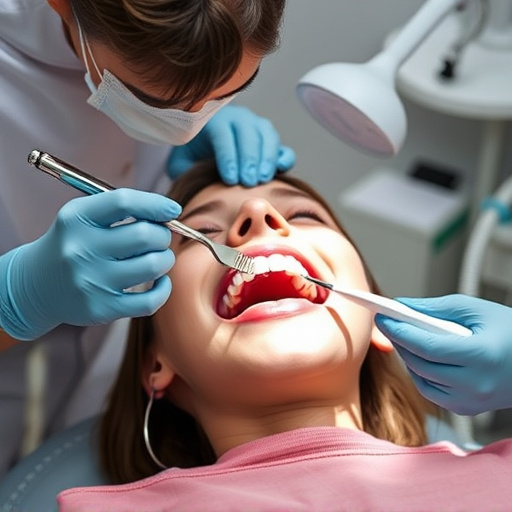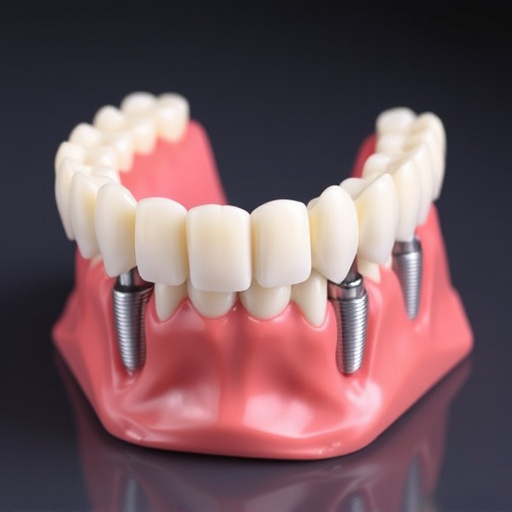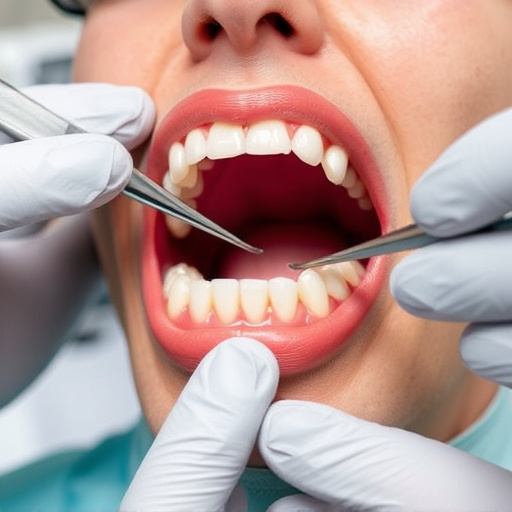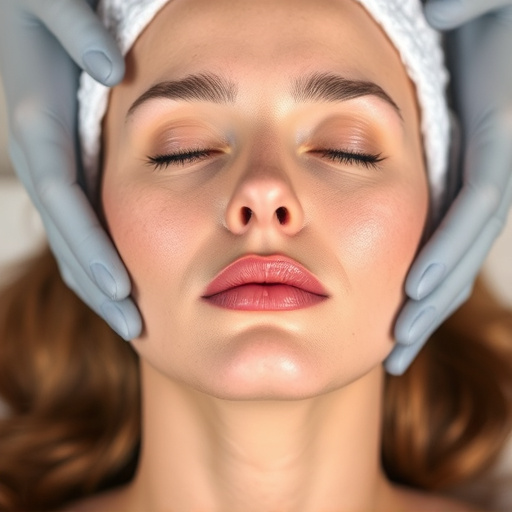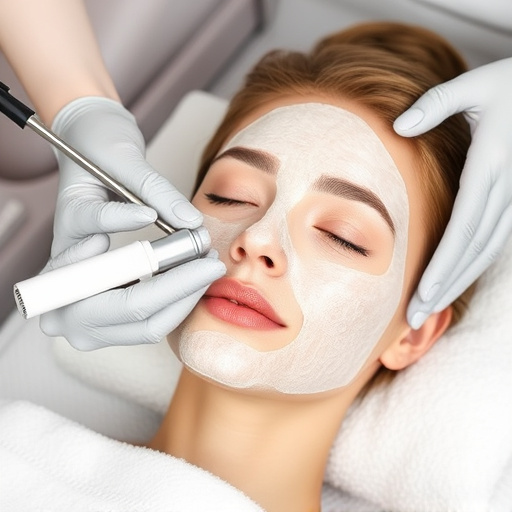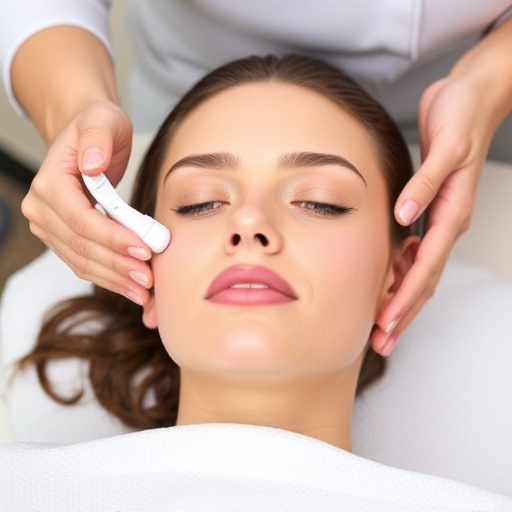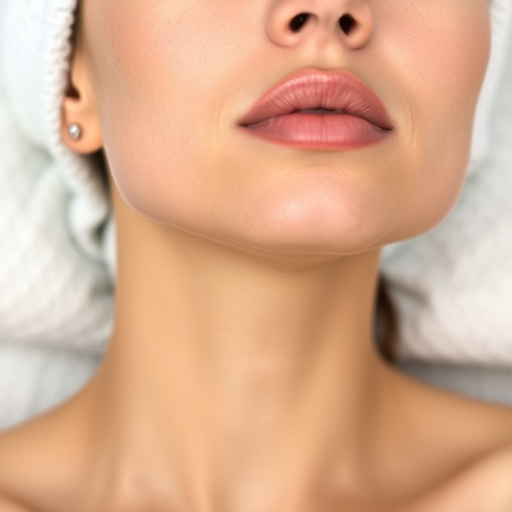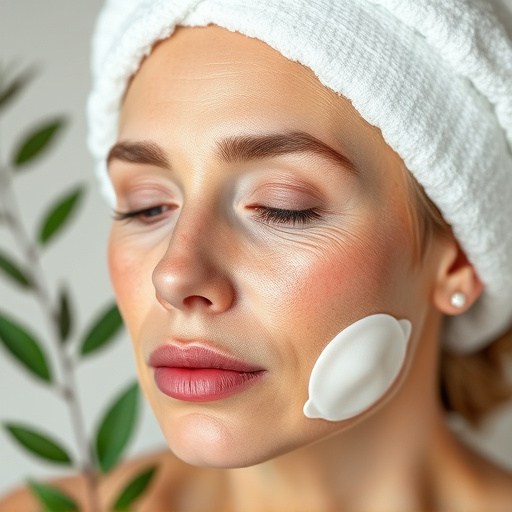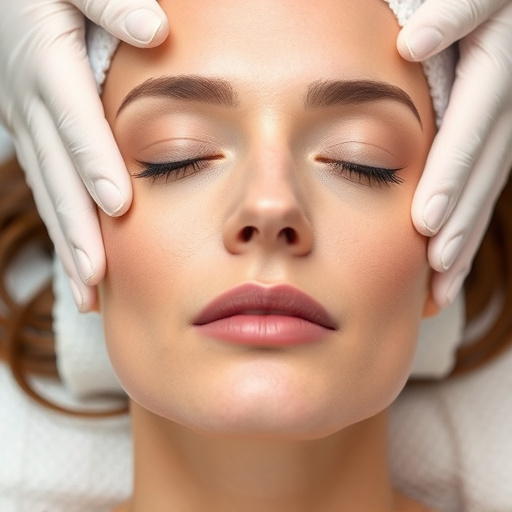Sun damage treatment involves recognizing symptoms like wrinkles and age spots, taking protective measures (SPF sunscreen, clothing, shade), and using aesthetic treatments (chemical peels, microdermabrasion, laser therapy) to stimulate repair and collagen production. Non-invasive skin tightening maintains elasticity. Post-treatment care includes gentle skincare, daily sunscreen, and avoiding harsh products. Always consult a dermatologist for personalized recommendations based on existing conditions.
Sun damage treatment is a crucial step towards achieving healthy, radiant skin. However, protecting your skin during this process is essential to prevent further harm and promote optimal healing. This article guides you through understanding the fundamentals of sun damage treatment, outlines vital steps for enhanced skin protection, and offers post-treatment care tips for remarkable results. By following these principles, you can safely navigate the journey towards rejuvenated, damage-free skin.
- Understanding Sun Damage Treatment Principles
- Essential Steps for Skin Protection During Treatment
- Post-Treatment Care for Optimal Results
Understanding Sun Damage Treatment Principles

When it comes to sun damage treatment, understanding the principles behind it is key to achieving healthy, radiant skin. The first step involves acknowledging that sun damage can manifest in various forms, from wrinkles and fine lines to age spots and hyperpigmentation. Each of these issues requires a tailored approach during treatment to prevent further damage while stimulating cellular repair.
The golden rule of sun damage treatment is to always prioritize protective measures. This includes the diligent use of broad-spectrum sunscreen with high SPF, wear protective clothing, and seeking shade during peak sunlight hours. Additionally, incorporating aesthetic treatments like chemical peels, microdermabrasion, or laser therapy can help to target specific concerns effectively. These procedures promote skin cell turnover, remove damaged outer layers, and stimulate collagen production, resulting in improved texture, tone, and overall skin brightening. Moreover, focusing on skin tightening techniques through non-invasive procedures ensures that the skin retains its elasticity, further enhancing the anti-aging benefits of your sun damage treatment regime.
Essential Steps for Skin Protection During Treatment

Protecting your skin during sun damage treatment is crucial for achieving optimal results and preventing further harm. Always start by consulting a dermatologist who can recommend suitable non-surgical treatments based on your specific condition, taking into account any existing skin issues like acne or previous laser hair removal sessions. They may suggest protective measures such as wearing broad-spectrum sunscreen with an SPF of 30 or higher daily, even on cloudy days, and reapplying every two hours.
Additional essential steps include limiting sun exposure during the peak UV radiation hours (usually 10 am to 4 pm), wearing protective clothing like long sleeves, pants, and wide-brimmed hats, and seeking shade whenever possible. Using acne treatments or other topicals should be done cautiously in conjunction with these protective measures to avoid further irritation and sensitization of the skin.
Post-Treatment Care for Optimal Results

After undergoing any sun damage treatment, such as chemical peels or laser therapy for wrinkle reduction, proper post-treatment care is essential to achieve optimal results and promote skin healing. It’s crucial to follow your dermatologist’s specific aftercare instructions, but generally, maintaining a gentle yet effective routine is key. Avoid using harsh cleansers or exfoliants that might irritate the sensitive skin; opt instead for mild, hydrating products.
Moisturizing is another critical aspect of post-treatment care. Sun damage often leaves the skin dry and prone to further irritation, so keeping it hydrated helps accelerate healing and maintains the skin’s integrity. Additionally, applying sunscreen daily becomes even more vital after aesthetic treatments like chemical peels, as your skin may be more susceptible to UV damage. This step not only protects against new sun damage but also aids in preventing potential hyperpigmentation and further wrinkle formation.
When undergoing sun damage treatment, protecting your skin is paramount to achieving and maintaining optimal results. By understanding the core principles of sun damage treatment and employing essential steps for skin protection, you can ensure your skin recovers effectively while minimizing the risk of further damage. Following post-treatment care guidelines will also enhance the overall health and appearance of your skin. Remember, consistent protection from UV rays is key to preventing future sun damage, so make it a habit to incorporate these practices into your daily routine for long-lasting, radiant skin.
